1950 Bathurst Street, Toronto, ON, M5P 3K9
(416) 789-3291
[email protected]
Emergency Funeral Contact
Cell: 416-565-7561
Though my feet are still here in Canada, I had two moments abroad this week which I want to mention, both centred around sacred memory.
Honouring Memory through Learning
Those that were in Shabbat Torah Study this past week will remember learning a bit about Rabbi Abraham Geiger. I didn’t know at the time – but his Yartzeit was this week. Through the magic of Zoom, I was able to attend a lecture in Germany by Rabbi Dr Professor Walter Homolka, Rector of the Abraham Geiger College, who pointed out the many anniversaries that we are celebrating the year:
Some are calling it the 250th years of Liberal Judaism, dated from when Moses Mendelssohn broke with the rabbinate around burial practices. This Shavuot will be the 200th year since the first Confirmation ceremony. It is the 150th year since the opening of the first Reform Rabbinical school in Berlin (and 80 years since the Nazis closed it), 120 years since the birth of Rabbi Regina Jonas, and 50 years since the ordination of Rabbi Sally Priesand.
This coming Tuesday, Holy Blossom Temple is hosting Rabbis Michael Marmur and David Ellenson. I don’t have space here to list their titles – but Rabbi Ellenson ordained me as a rabbi, and Rabbi Marmur (the younger) taught me that the rabbinate can be both serious and engaging. They are without compare, and this lecture in memory of Rabbi Mark Dov Shapiro z”l will leave you wanting more.
Honouring the Memory of the Righteous
I was also surprised to hear “Essex” in the news in Canada this past week and was saddened that it was for a moment of tragedy – the murder of MP Sir David Amess.
Since I have learned that Sir Amess was a friend to the Jewish community in Southend-on-Sea. Rabbi David Mitchell of the West London Synagogue introduced me to the history of Raoul Wallenberg’s memorial near his community – a memorial that Sir Amess campaigned for as a symbol of Wallenberg’s heroism which saved tens of thousands of our people.
One of the themes of this week’s parasha – Vayera וַיֵּרָא is the importance of never standing by before an injustice. Abraham, of course, debates with God about the preservation of Sodom and Gemorrah. Abraham ibn Ezra (1092-1167) even goes far as to claim that it was because the innocent remained silent and never protested the ill-deeds of others that they didn’t qualify as righteous enough to save the city.
A few weeks ago, we were able to honour the descendants of the Righteous amongst the Nations at Holy Blossom thanks to the connections of Dmitri Kanovich. I am sure it was as moving for those in person as it was for those participating online.
Though I never had the opportunity to meet him, I am thankful for the work of Sir Amess, who raised the consciousness of Raoul Wallenberg and his righteous deeds.
May the memories of the righteous be, for us, a blessing.
By Jacque Friedland, Chair, Holy Blossom Refugee Task Force
In the fall of 2015, more than 100 Holy Blossom members gathered in the Philip Smith auditorium to do what Holy Blossom members have done for decades – to make plans to welcome the stranger. At that time, the discussions were about Syrian refugees. The conversations were not that different from 40 years earlier when Holy Blossom members came together to plan for welcoming Vietnamese immigrants. Now, it is time to join together once more and plan for the arrival of new Canadians from Afghanistan in addition to planning for the support that will be needed to welcome the nine people for whom we already have signed documents and are awaiting final permissions to travel to Canada. These include an Iranian Jewish woman currently held as a refugee in Australia, a Yazidi family in Syria, and two men currently in Israel – one from Eritrea and one from Darfur.
We are able to build on the tremendous success of the past six years during which time we have partnered with JIAS [Jewish Immigrant Aid Services] to support multiple families – Syrian, Yazidi, Rwandan, Eritrean, and most recently Nicaraguan. Our volunteers help find new homes; donate furniture, household goods, and clothing; arrange for phones and internet service; drive our families to school, medical, and other appointments; visit on a regular basis; assist with learning English; and so much more.
At this time, we want to connect with all those who are interested in assisting. Assistance could include the sponsorship of an Afghan family (or families) – either through financial support, front-line support in resettlement, or both – as well as support for the families we have already committed to. There are numerous ways for you to be involved in addition to acting as a sponsor. And there is an immediate need to support the family from Nicaragua, particularly with winter clothing (see detailed list at the end of this message).
The primary purpose of this communication is to collect names and information from those who are interested in participating in a wide range of activities as we once again extend ourselves to assist newcomers to Canada. Please reach out to Jacqueline Friedland, Chair of the Holy Blossom Refugee Task Force, through Rabbi Helfman, at [email protected] or call (416) 789 3291 ext. 277.
Specific Requests for Nicaraguan family
Two Children (boy and girl, twins, 3-years old)
Two Adults (1 female size “M” & 1 male size “XXL”)
Health-related need – dentist for children in Toronto
By Sharoni Sibony, Adult Education Coordinator
A few years ago, in a woodworking course at Sheridan College, I learned about Richard Serra’s Verblist – a list of verbs that animate the ways in which we relate to ourselves, to others, to place, and to the very process and materials of making. In class, I was given a block of cedar, a hand saw, a drill, some glue, and the instructions to manipulate the materials in response to one of the verbs. The structure I created, prompted by the verb “to enclose,” was a foot-tall prototype of a (not particularly kosher) sukkah. It was an enclosure that didn’t fully enclose: it was designed to be open to the elements, to honour the fragility and impermanence of life, and to create a space for contemplation and meditation. I titled the piece “in your most frail gesture are things which enclose me,” after the third line of my favourite e. e. cummings poem.
Using pieces of soft cedar chipped off the block, drilled with holes and charred at the edges, I created a protective but porous, chrysalis-like space for the transformation of the soul. My design inspiration came from Mary Oliver’s image of a fragile “sky house” and from a beloved essay by Rodger Kamenetz, who survived Hurricane Katrina. Kamenetz became committed to collecting the slate roof tiles that had been torn off the roofs of New Orleans. He contrasts “the weird all-steel houses I see a few blocks from me, dropped down like alien life forms, guaranteed to survive any storm because they aren’t alive in the first place. Not houses but people-storage containers, closed systems, cubes of steel you can live inside for centuries. The wind can’t touch you; the water won’t wet you. They can’t be damaged, which is the problem: for everything that has to do with soul is thin and delicate and strong, like a slate, and can endure and can be damaged. And has holes in it.”
I’m one month into working with this beautiful community at Holy Blossom, and we’re now in Sukkot. Kamenetz’s words are sitting inside me once again, this time taking on new meaning as I think about the ways in which this synagogue has enclosed and embraced its members through a turbulent, grief-filled year that has tested our souls. One of the strengths I see in this community is its engagement with the world, a porousness that makes us both sensitive and durable. On Rosh Hashanah and Yom Kippur, we held a series of remarkable study sessions, headlined by the presentation of the Rabbi Gunther W. Plaut Humanitarian Award to Colonel Chris Hadfield, a man whose gaze has taken in the whole world at once. We also got to watch people like Alex Johnston and Devon Spier extend, with enormous vulnerability, their own “frail gestures” – their own expressions of grief in a panel on infertility and fertility – to reach us and connect us, to hold others of us who hurt, and to be held by us as a community.
Likewise, we’ve been building an important dialogue with our Indigenous neighbours, which didn’t only start with our panel on National Teshuvah and Indigenous Reconciliation, and won’t just end with this week’s memorial to the children of the Indian Residential School system.
In the coming weeks, we’re looking forward to sharing more education with soul. On October 26, hear from two masterful teachers of the Reform Movement at the Inaugural Annual Lecture in Memory of Rabbi Mark Dov Shapiro z”l, featuring Rabbis David Ellenson and Michael Marmur. Rabbi Splansky’s course in faith and faithlessness lets us situate our own experiences within a Jewish tradition of wrestling with these questions. We’ll get to hear from two of our in-house cultural experts: Cynthia Good shares her favourite books of the season, while Gillian Helfield tells us what she’s watching on TV and film. Mark Goodman’s weekly study groups are always open to everyone – Torah and history on Wednesdays and Talmud and halacha on Thursdays.
The HBT Adult Education Committee – Cynthia Good, Gillian Helfield, and Les Rothschild – have welcomed me so warmly to the team, and have infused their fall program offerings with the same warmth they’ve shown me. I hope to meet you at a class or a lecture soon. Moadim l’simcha!
As I was building a shack in my back yard this past week, someone nearby commented on how it looked pretty secure – except that the holes in the roof could be a slight problem for the rain.
Now that it is raining – I have to agree.
One of the most frightening things for a homeowner is when water seeps through and takes unexpected paths deep into the home. In our protected bubbles we secure ourselves in, we control every element so that beauty and comfort are supreme.
And yet – once a year we step into the holey, outside of the climate control, and experience the transcendent art of nature.
Every year I find poetry in this transition from stability to ramshackle. But this year I see the reverse – that in the uncontrolled, there is now standing an imperfect structure in my yard.
Enclosing what was once a walking path, is now structure. The walls break the passing wind and provide definition where there was none before.
Something is now standing there – with water soaking the paper chains, pouring through the holy roof.
This moment for me is about celebrating those boundaries which make our lives special – both physical but also in time.
For my family- the first Tot Shabbat of the year is arriving – and the boxed-out space of Shabbat will regain a bit more of its definition. For others, Saturday morning attendance at Holy Blossom is returning to their routine, giving more form to their social and communal Jewish lives.
Yizkor and Shemini Atzeret are around the corner, and making this time sacred will help delineate. We are still far from perfection, the full schedules and energy which flowed through our Jewish lives. We aren’t secure yet – but at least the boundaries are taking shape as life returns.
Moadim L’Simcha.

1950 Bathurst Street, Toronto, ON, M5P 3K9
(416) 789-3291
[email protected]
Emergency Funeral Contact
Cell: 416-565-7561
